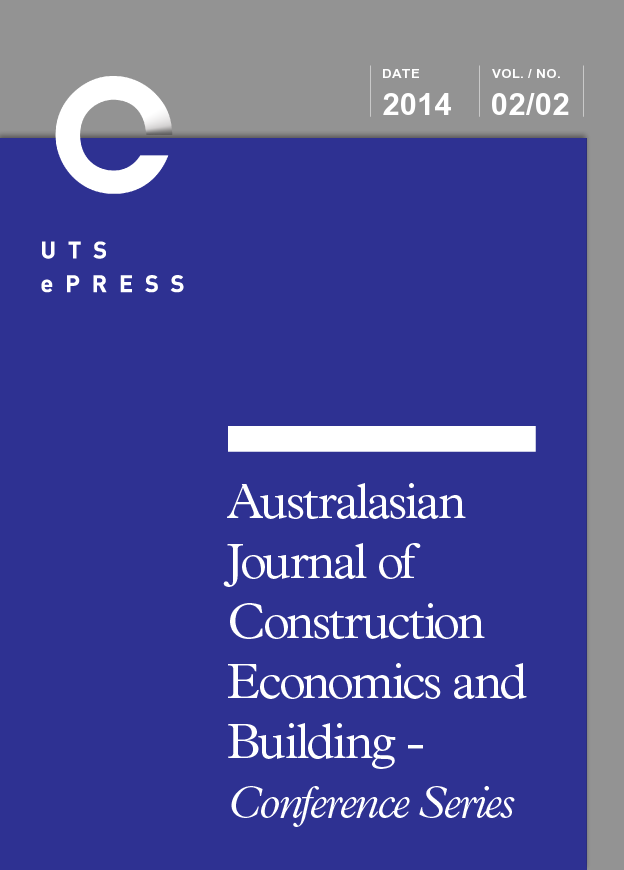Adoption of Solar Grid-Tied PV-System Adopted in a Residential Building
Main Article Content
Abstract
Emerging construction technologies focussing on the role and development of energy-conserving equipment can play a major role in solving a wide range of environmental and nature resource problems such as the greenhouse gas. Alternative energy is becoming a popular for property developers because of its potential of becoming more economically viable option when compared to current energy source-electricity. The objective of this research report is to conduct a cost-benefit analysis of adopting a solar energy technology specifically the solar grid-tied system by comparing the cost of initial investment and usage in a typical three bedroom residential building a conventional electricity power supply. Using a case study research approach, the research findings showed that the PV system is more cost-effective in the long term compared to the conversional electricity supply. Although the pre-investment is relatively high in the PV system, it is a reliable investment in the long-term. It is important to emphasise that the use energy efficient appliances, lighting, insulation and double glassing has enhanced the effectiveness of the system.
Keywords: Photovoltaic system (PV); Solar energy; Cost-effectiveness
Article Details
Section
Authors who publish with this journal agree to the following terms:
a) Authors retain copyright and grant the journal right of first publication with the work simultaneously licensed under a Creative Commons Attribution License that allows others to share and adapt the work with an acknowledgement of the work's authorship and initial publication in this journal.
b) Authors are able to enter into separate, additional contractual arrangements for the non-exclusive distribution of the journal's published version of the work (e.g., post it to an institutional repository or publish it in a book), with an acknowledgement of its initial publication in this journal.
c) Authors are permitted and encouraged to post their work online (e.g., in institutional repositories or on their website) prior to and during the submission process, as it can lead to productive exchanges, as well as earlier and greater citation of published work (See The Effect of Open Access). Where authors include such a work in an institutional repository or on their website (ie. a copy of a work which has been published in a UTS ePRESS journal, or a pre-print or post-print version of that work), we request that they include a statement that acknowledges the UTS ePRESS publication including the name of the journal, the volume number and a web-link to the journal item.
d) Authors should be aware that the Creative Commons Attribution (CC-BY) License permits readers to share (copy and redistribute the work in any medium or format) and adapt (remix, transform, and build upon the work) for any purpose, even commercially, provided they also give appropriate credit to the work, provide a link to the license, and indicate if changes were made. They may do these things in any reasonable manner, but not in any way that suggests you or your publisher endorses their use.
